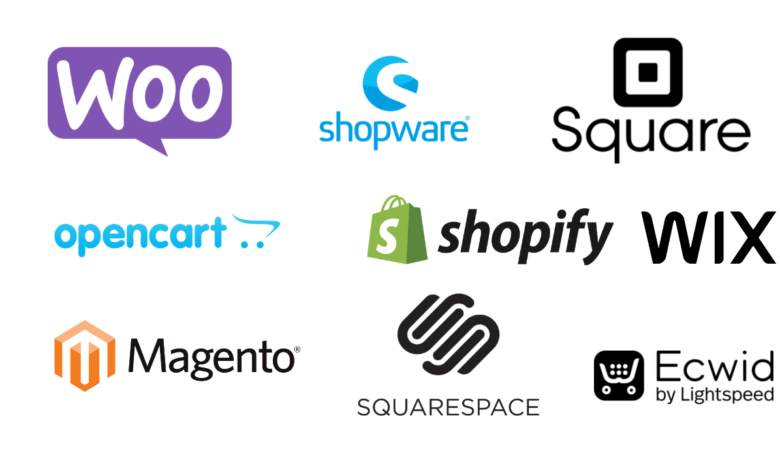In the digital age online stores is essential for every company. It doesn't matter whether you're just beginning or are already large. This guide will teach you how to make use of open-source online shopping platforms to develop an excellent online store. This will assist you in meeting the ever-changing requirements for online retail.
eCommerce has revolutionized the way people shop and intelligent business owners are using open platform open source to benefit. These platforms are incredibly powerful and flexible as well as cost-effective. They can help you build your own online space that is a conversation with your customers.
In this tutorial we'll guide you through the process of setting your online store using open platform that is open source. We'll discuss the advantages of open online e-commerce that is open source selecting the best platform and designing your store and incorporating advanced features. This article is your guide to the thrilling world of online retail.
Key Takeaways
- Explore the benefits of open free eCommerce solutions over traditional ones.
- Explore the most well-known open source online shopping platforms, and discover their unique features.
- Learn how to create an online store that is effective from scratch with a focus on the selection of platforms design, layout management of products, and much more.
- Know what are the technological requirements and set-up process for your E-commerce business.
- Optimize your online store's security, performance and success in marketing.
Starting by Using Open Source E-commerce Solution
Many businesses are shifting to online, which makes the decision between proprietary and open source e-commerce platforms crucial. Open source solutions provide the flexibility to customize, as well as cost savings. They're a great option for the proprietary platform.
Understanding Open Source vs Proprietary Platforms
Platforms such as WooCommerce and Magento are open source. This means that they are accessible for modification to suit anyone who has the appropriate capabilities. However platforms such as Shopify or BigCommerce are controlled by a single company. They typically require a monthly subscription fee.
Key Benefits of Open Source E-commerce
- Costs that are lower upfront and ongoing charges
- Ability to modify and integrate with a variety of tools and programs
- Active and active community of developers that offer assistance and assistance and
- Security enhanced through community-driven security updates and bug fixes
Essential Requirements Before Starting
Before you start an online store using an open source software be aware of these essential factors:
- Access to a web designer proficient on the platform you choose
- A reliable hosting service and registration of domain names
- A thorough planning of the catalog Payment methods, shipping options
- Intention to maintain the service, updates and security measures
Understanding the difference in open-source as well as custom-built platforms is essential. Knowing the prerequisites prior to launch aids businesses in making the right decision. This will set the stage for the success of an online store.
Popular Open Source E-commerce Platforms Comparison
The creation of an online store offers many choices with open-source eCommerce platforms. WooCommerce, Magento, PrestaShop, and OpenCart are the top options. Each of them has distinct platforms with distinct features as well as capabilities. It is important to evaluate them prior to deciding which one is the most appropriate for your company.
WooCommerce is an WordPress plugin that is known for its ease of use. It is ideal for small - to medium-sized enterprises. Magento is strong and scalable, perfect for large companies. PrestaShop blends the power of PrestaShop with user-friendly. OpenCart can be adaptable and flexible.
| Platform |
Ease of Use |
Scalability |
Community Support |
| WooCommerce |
High |
Medium |
Extensive |
| Magento |
Medium |
High |
Robust |
| PrestaShop |
High |
High |
Substantial |
| OpenCart |
High |
Medium |
Extensive |
The choice of a platform is contingent on your company's needs budget, financial resources, and technical capabilities. If you know the advantages and disadvantages, you will be able to pick the right one. This will allow your online store grow.
How to Build an Effective Online Store Using Open Source Platforms
The process of creating a successful online store today requires choosing the right platform. If you're just starting out or have a lot of experience, selecting the right platform is essential. It's an essential step to creating a successful online store.
Platform Selection Criteria
When considering open-source e-commerce platforms take note of a few key aspects. Examine how flexible and scalable it is. Also, look at how easy it is to use as well as the assistance from the community. Check these alternatives to determine the right fit for your company.
Technical Requirements Overview
Knowing the technical needs of your website store are essential. Consider server configurations in relation to database management, as well as the integration of services such as payments gateways. Making sure you meet these technical demands early will make your store operate smoothly.
Initial Setup Process
After selecting the platform you want to use It's time to complete the initial setting up. This involves the creation of your shop's configuration and adding products and creating payment and shipping. The ability to customize your store to fit your brand's image is also a an aspect of this procedure. A carefully planned initial set-up will set your store up to be successful.
When you take your time choosing the right platform and understanding the technical requirements, and establishing your store, you will be able to make a fantastic online store. It will be able to meet the needs of your customers and will help grow your business in the world of digital.
Setting Up Your Development Environment
The creation of a robust development environment is essential to the success of an online store. That includes locally-based tools, web hosting and the setup of domains. We'll go over the steps you need to take to get you started on your journey towards e-commerce.
Local Development Tools
Start by creating an Local development setting on your PC. This allows you to create your store with out impacting the live website. Tools such as the XAMPP, WAMP as well as MAMP have everything you need to develop your local website.
Web Hosting Selection
Choose then a Web hosting service that is compatible with the needs of your business. Find a host that has good localization features, sufficient internet hosting resources, and an easy integration with your online store's e-commerce platform.
Domain Setup and SSL Certificate
Protect your online store's reputation by registering a unique website and then acquiring the SSL certification. This increases the trustworthiness of your store and ensures the security of checkout for customers.
| Action |
Recommended Tools |
| Local Development |
XAMPP, WAMP, MAMP |
| Web Hosting |
Bluehost, GoDaddy, HostGator |
| Domain Registration |
Namecheap, Google Domains, GoDaddy |
| SSL Certificate |
Let's Encrypt, Comodo, DigiCert |
If you follow these steps, you'll be able to build a solid foundation on which to build your own online shop. This guarantees a seamless development process as well as a safe and easy service for customers.
Designing Your Store's User Interface
Designing an appealing eCommerce design is essential to attract customers and increasing sales. It's all about picking the appropriate theme and modifying your design of the interface for users (UI). Every aspect should work to enhance the shopping experience.
Choosing the Right Theme
The theme you select will be the basis of your E-commerce website's design. It should reflect your brand's style and be focused on the user interaction and the responsive design. Choose themes that are simple modern, sleek and simple to navigate. Your customers will be able to locate what they require easily.
Customization Best Practices
When you've picked the theme, you can modify it to suit your needs. Make sure you use consistent branding, such as the colors and logo. Also, ensure that you have consistent branding. Also, ensure that your product displays, search and checkout are easy. This helps ease shopping to your clients.
Mobile Responsiveness Guidelines
- Your store should look amazing across every device and screen size.
- Utilize touch-friendly navigation, as well as clear content designed for mobile users.
- Make pages as fast as possible and keep images tiny to make shopping easier on mobile devices.
If you follow these guidelines to follow, you can create your store look attractive and is simple to use. This will draw customers in and boost sales.
Product Catalog Management and Organization
The management of your catalog's products is crucial to ensuring your eCommerce store's growth. Clear listings, well-organized categories, and effective control of inventory are essential. They can improve the user experience as well as increase sales. Let's look at these crucial strategies.
Crafting Compelling Product Listings
Create product descriptions interesting and informative. Make use of high-quality images and precise descriptions. Make sure to include easy-to-read specifications and use keywords with care. This will help customers locate the items they need quickly.
Structuring Intuitive Product Categories
Sort your items into categories that are logical. Sort similar items and give distinct names. Include advanced filters to facilitate shopping. A well-organized catalog improves your shopping experience.
Managing Inventory Efficiently
Maintain your inventory records up-to-date and current. This helps avoid stock-outs and overselling. Utilize the E-commerce system's Inventory management software to manage the process of updating. Regular inspections and forecasts help satisfy the demands of your customers.
Optimizing Product Attributes
Optimize and curate Product attributes such as sizes, SKUs and colors. The accuracy and detail of attributes enhance customer search results and aid customers in making better decisions.
| Product Listing Elements |
Category Structure Attributes |
Inventory Management Metrics |
Product Attribute Optimization |
- Images of high-quality
- Descriptions in detail
- Relevant specifications
- Use of strategic keywords
|
- Logical grouping of related items
- Descriptive and clear category names
- Advanced filtering options for your choice
- Navigation intuitive and intuitive
|
- Complete inventory records
- Automated inventory updates
- Regular inventory checks
- Sales forecasting
|
- Product SKUs
- Colors and sizes
- Materials and finishes
- Other relevant details
|
By focusing on these tactics using these tips, you can improve the shopping experience on your website more efficient. This results in increased visibility as well as happier customers and more sales.
Payment Gateway Integration and Security Measures
In the era of online commerce, ensuring your customers' personal information secure is crucial. It is essential to ensure that transactions are smooth. Let's examine what is crucial most in the integration of payment gateways and security.
Popular Payment Solutions
There are numerous different payment processing services for online stores. A few of the most popular are:
- PayPal
- Stripe
- Authorize.Net
- Braintree
- Square
Each one has its own distinct specifications, costs as well as security level. Understanding your company's needs and preferences of your customers can help you choose the most appropriate one.
SSL Certificate Implementation
SSL certificate are crucial for protecting the payment information of your customers. They provide a secure link between the browser of your customer to your web server. It protects sensitive data from hackers. The process of obtaining and setting up SSL certificate is crucial to secure checkouts and being in compliance with PCI standards.
Security Best Practices
Security goes beyond only the payment gateways and SSL certificates.. Here are some additional important steps:
- Make sure your e-commerce software and plugins up-to-date to guard against weaknesses.
- Make sure you use secure passwords as well as two factor authentication when you need access to admin.
- Check your website for any suspicious activity or access that is not authorized.
- Backup your website as well as customer data on a regular basis for security.
- Be aware of the industry's regulations and ensure compliance requirements, such as PCI to safeguard the security of your financial information.
By making sure you are using payments gateways and SSL certifications, solid security practices, you can establish an unsecure and secure online store. This will help your customers feel secure purchasing from you.
Shipping and Inventory Management Solutions
For any online shop shipping, as well as the management of inventory are essential to the success of any online store. They make sure that your orders are delivered within the timeframe, reduce costs, and ensure that customers are content. This is vital for any business that uses e-commerce.
If you are looking to select the shipping method online retailers can choose from a variety of options. They can utilize the integrated services of carriers, regional service providers, or even manage shipping themselves. A well-designed shipping mix can increase satisfaction of customers and increase profits.
Tracking inventory is essential to online shops. An efficient system helps you monitor stock as well as forecast demand and make smart purchases. This can reduce the number of orders that are fulfilled delays and ensures that customers are satisfied.
Collaboration with logistics companies can help make the process of shipping and inventory more efficient. Third-party logistics providers provide expertise and resources. They can help you improve your supply chain from storage to delivery.
- Consider and choose the most appropriate shipping carrier and delivery options for your online store.
- Create a complete system for tracking inventory system to ensure that you have the best levels of stock
- Look into integrating logistics companies to streamline your supply chain as well as delivery of orders
By focussing on inventory and shipping online stores can provide smooth, efficient and a service that is focused on the customer. This can lead to increased sales and growth in the digital space.
SEO and Marketing Tools Implementation
In the ever-changing online world of e-commerce, having an online presence that is strong is essential to succeed. An essential element of a well-planned digital strategy is to use targeted SEO for e-commerce along with online marketing tools. This guide will help you understand how to make your store more appealing to search engines and utilize marketing tools to boost the amount of traffic to your site in addition to the conversion rate..
On-Page SEO Optimization
Enhancing your website's on-page elements is the basis of a solid SEO strategy. This includes:
- Keyword-rich and catchy product descriptions and titles
- Make sure that your site is easy for users as well as the search engine to use
- Optimizing alt-text for images and meta tags to improve visibility
- Schema markup is a way to provide search engines more details about your product
Marketing Integration Options
A strong set of internet-based marketing tools can aid your online store in reaching more customers and increase engagement. A few of the options are:
- Email marketing platforms to send targeted newsletters and campaigns
- Integration of social media to utilize platforms such as Facebook, Instagram, and Twitter
- Marketing partnerships with influencers to reach out to new audiences
- Paid advertising platforms for focused, data-driven ads
Analytics Setup Guide
To determine how your online sales are performing, establishing an effective analysis tools is vital. This is a good example of:
- Utilizing Google Analytics to track important metrics such as traffic, rate of conversion, as well as customer behaviour
- Incorporating tracking capabilities for e-commerce to provide more insight into the sales funnel
- Are you looking into advanced analytics solutions for detailed analysis of data and reports
If you follow these steps, and using appropriate SEO for e-commerce, digital marketing as well as analytical tools will help you increase the visibility of your online store. This will allow you to drive more targeted traffic, and help improve your the long-term future of your business and its success.
Performance Optimization and Speed Enhancement
It is essential to ensure that your online store functions smoothly. It should be responsive and load fast. You can achieve this through caching or CDNs and conducting frequent tests on your website.
Caching assists in saving information that's frequently needed. This helps your website run faster. It is possible to use the browser cache as well as server-side cache to speed up the process. Additionally CDNs CDN can spread out your website's information, making it easier for visitors.
It is essential. Tools such as Google PageSpeed Insights are able to guide you in making your site more effective. They can help you discover methods to improve your website speedier and user-friendly.
FAQ
What's the distinction between proprietary and open source eCommerce platforms?
Open platform that is open source are available for free and can be altered by anyone. They are home to a huge group of developers. Private platforms are paid for and they aren't able to be modified in the same way as you can with HTML0.
What are the major advantages of using an open source e-commerce platform?
Open source software is flexible and help you save money. You can also modify them to suit your needs.
What are the basic conditions to start the online business?
Before you begin, consider your technical abilities and hosting. It's also necessary to have a domain as well as many other factors to make a successful start.
What should I consider when choosing the most suitable open source platform for my company?
Take a look at the features of the platform and features, as well as how simple it is to use, as well as how well it supports its users. These will allow you pick the right option for your online store.
What are the technical requirements to create a reliable online store?
You'll need hosting for your website, SSL certificates, and an option to accept payments. Also, you'll require e-commerce tools and plugins.
How do I setup an environment for development on an online business?
You'll need local equipment including a web hosting service with a domain, as well as the SSL certification. This will ensure that your website is the best beginning.
What are the most effective practices for creating a user-friendly design for a store's user interface?
Select a great theme and personalize it. Be sure that it functions on mobile devices too. This will make shopping simple for customers.
How can I manage my catalog of products and efficiently organize my inventory?
Create your product descriptions clear and arrange them properly. Keep track of your inventory and make your items easy to locate. This will make it easier for your customers.
What are the essential security measures I need to take to protect the online shop I am running?
Utilize Secure payment techniques, SSL certificates, and use the most effective guidelines. This will ensure that your customer's information secure.
How can I improve the speed and performance on my website store?
Utilize CDNs, caching, and make sure you test your site regularly. These will ensure that your website efficient and secure.




